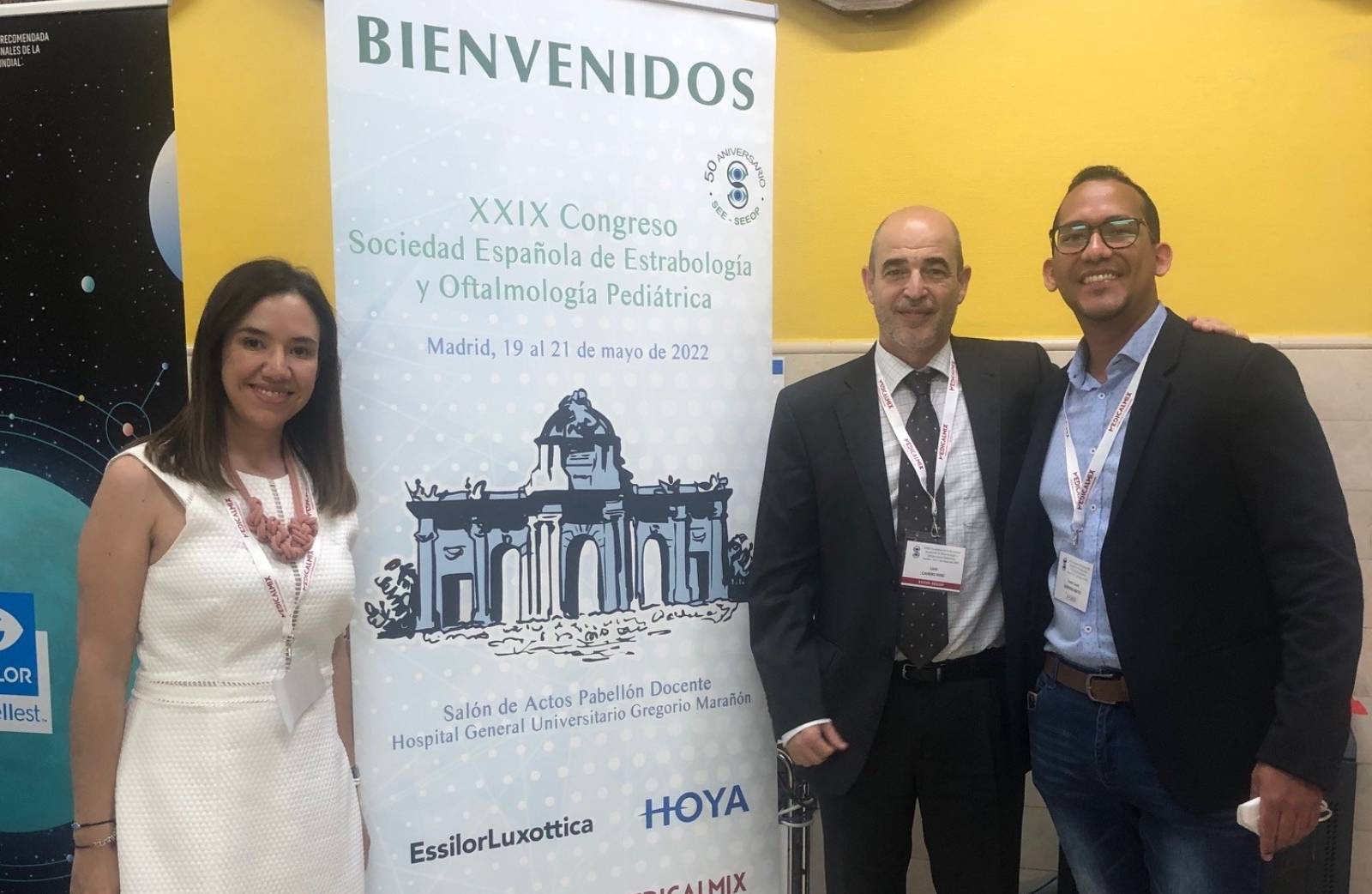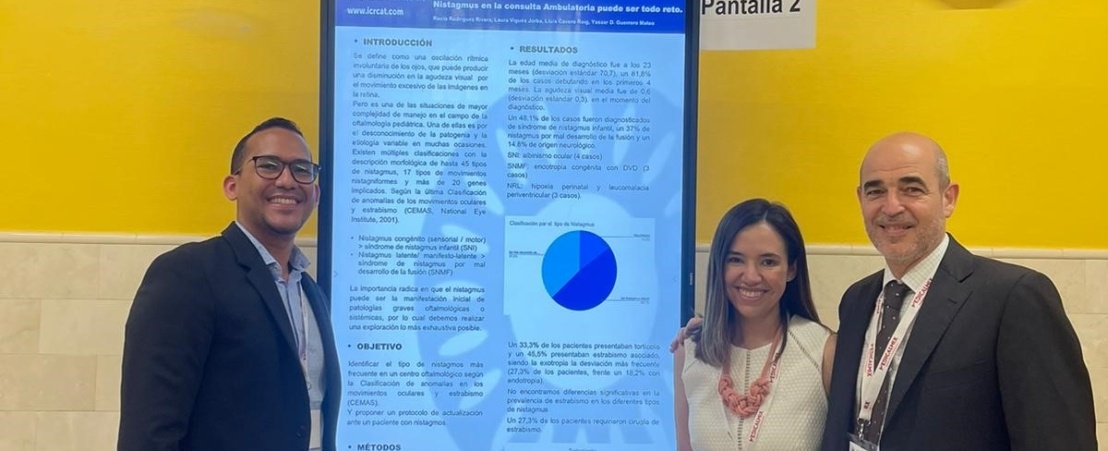
Last May was held the 29th edition of the Congress from the Spanish Society of Strabismus and Pediatric Ophthalmology (SEEOP). The event had the participation of the most remarkable organizations from Spain in regards to ophthalmology, pediatric ophthalmology, strabismus and ocular motility. Among them there are some members of ICR’s medical team, who contributed to the congress with presentations about age-related esotropia and nystagmus.
The first day of the event, Dr. Jeisibel S. Malave Navarro, Dr. Rocío Rodríguez Rivera (who had already intervened in previous editions of the congress) and Dr. Yasser Guerrero Mateo took the stage. They presented the results of their study, in which they had analized the symptoms, history, diagnosis methods, evolution and treatments of patients with age-related distance esotropia. This pathology patología, also known as ARDE, consists of the deviation of one or both eyes towards the nose and it affects adults over 60 years old.
Through the analysis of the medical history of several patients, it was observed that ARDE has a higher prevalence in women; a history of hypertension and/or dyslipidemia are the most frequent; a period of 2 years approximately from the moment the symptoms appear until they are ecaluated in a medical appointment and the prism in glasses as the most used treatment. Besides, the authors of the study concluded that esotropia in adults is an increasingly frequent pathology, in which patients can present symptoms up until an advanced age, but it can be stabilized through a medical treatment.

At a later presentation, Dr. Rocío Rodríguez Rivera, Dr. Laura Vigués Jorba, Dr. Lluís Cavero Roig and Dr. Yasser Guerrero Mateo spoke about nystagmus, an involuntary rhythmic oscillation of the eyes, which results in a reduction of visual acuity.
The doctors presented a cross-sectional, retrospective and observational study, focusing on their career in the ICR Ophthalmology Center from 2015 to 2020. They analized the cases of 33 patients diagnosed with nystagmus with the goal of obtaining data about general prevalence and types of this pathology.
The results of the analysis showed that the average starting age of the symptoms first appeareance is 23 months (81.8% of the cases beginning during the first 4 months). Moreover, 27.3% of the patients required strabismus surgery.
Regarding the types of nystagmus, 51.5% of the patients were diagnosed with pediatric nystagmus, 33.3% with nystagmus due to fusion maldevelopement and a 15.2% of neurological origin. No significant differences were found in the prevalence of different kinds of nystagmus.
In conclusion, the specialized doctors conclude the nystagmus diagnosis can be a challenge for ophthalmologists, especially when the patient is that young. They suggest making the process easier by keeping a very accurate and complete medical history and performing a good ophthalmologic examination.
The event had a wide diversity of presentations of ophthalmologists and other experts, free communications and videoconferences, lectures and round tables.
Contact us or request an appointment with our medical team.